Uninstall WildFire Locker virus (Improved Removal Guide) - Sep 2016 updated
WildFire Locker virus Removal Guide
Description of WildFire Locker ransomware virus
The main threats of WildFire Locker ransomware
Since the middle of spring, WildFire Locker virus has been trying to swindle the money by stealing and locking computer users’ files. During its lifetime, the virus became more powerful and stronger. The victims of WildFire Locker ransomware think that the virus sneaked into their computers mysteriously. However, there’s no magic in ransomware distribution. It mostly spreads via malicious e-mail campaigns. Once, the victim opens a suspicious e-mail and attached Word file, the virus infiltrates computer’s system and starts working. After the infiltration, the virus starts scanning the computer and encrypting the files. It uses of AES-256 CBC encryption code and puts .wflx extension to corrupted files. If you lost access to your files and noticed .wflx extension, you are in trouble. First of all, you have to deal with WildFire Locker removal and then, decrypt locked files.
When the virus finishes file decryption, it notifies users about its dirty job. Victims are encouraged to read a ransom note called HOW_TO_UNLOCK_FILES_README_[VICTIM’S ID].txt. The creators of WildFire Locker inform that users have no other choice, just to buy a file decryption password and software. However, the hackers warn users to hurry, because the ransom might increase from 299 dollars/euros to 999 dollars/euros. Fortunately, you don’t need contact crooks via provided e-mail and learn more about Tor browser and bitcoins. Recently, ‘No More Ransom’ project launched two WildFire decryptors. So, take a deep breath, remove WildFire Locker with the help of FortectIntego, and then, restore the lost data.

Is it possible to avoid this ransomware?
The authors of WildFire Locker virus use various ransomware distribution techniques: Kelihos botnet, spam a-emails, exploit kits, malvertising attacks, etc. As you can see, the virus is lurking everywhere. So, we recommend updating or installing a reputable anti-malware program. Furthermore, you should stay away from suspicious e-mails and delete spam without considering reading it first. What is more, never open any links or attached files, if you don’t know the sender or the e-mail seems weird. Trust your inner voice which tells that something is not OK with the e-mail. Finally, WildFire Locker ransomware is a sneaky and slippery virus, so it can still manage to find a way to get into your computer. So, you should regularly backup your files and store them in external devices. Then, you can be sure that your files are safe, and you won’t need to pay the crooks if the ransomware attack occurs. Besides, hackers are the ones who shouldn’t be trusted. They rarely give back the files or provide a decryption key. Moreover, if they provide particular file decryptor, this tool might be malicious too. So, the computer-related problems will never end until you remove the ransomware completely.
WildFire Locker removal guide
If your computer was infected with this ransomware, you should not concentrate on file decryption. Firstly, you have to remove WildFire Locker from your computer. Only then, you can try to recover the files. Otherwise, the virus can encrypt the files over and over again. So, for WildFire Locker removal you will need a reputable anti-malware program. If you have it already, it’s time to update it. If you are a brave computer user and don’t have anti-spyware, you should download it right now. We recommend using FortectIntego or SpyHunter 5Combo Cleaner. Then, you have to run a full system scan. You should know that ransomware can block anti-malware programs. If you face this problem, follow our instructions bellow.
Getting rid of WildFire Locker virus. Follow these steps
In-depth guide for the WildFire Locker elimination
Important! →
The elimination guide can appear too difficult if you are not tech-savvy. It requires some knowledge of computer processes since it includes system changes that need to be performed correctly. You need to take steps carefully and follow the guide avoiding any issues created due to improper setting changes. Automatic methods might suit you better if you find the guide too difficult.
Step 1. Launch Safe Mode with Networking
Safe Mode environment offers better results of manual virus removal
Windows 7 / Vista / XP
- Go to Start.
- Choose Shutdown, then Restart, and OK.
- When your computer boots, start pressing the F8 button (if that does not work, try F2, F12, Del, etc. – it all depends on your motherboard model) a few times until you see the Advanced Boot Options window.
- Select Safe Mode with Networking from the list.
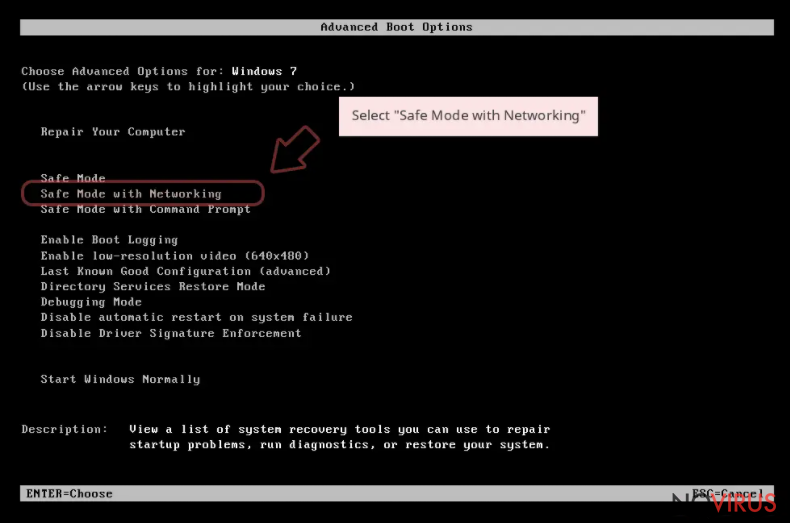
Windows 10 / Windows 8
- Right-click the Start button and choose Settings.
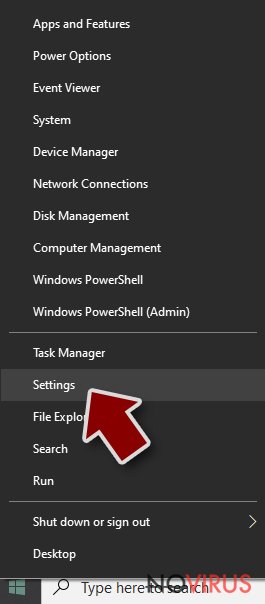
- Scroll down to find Update & Security.
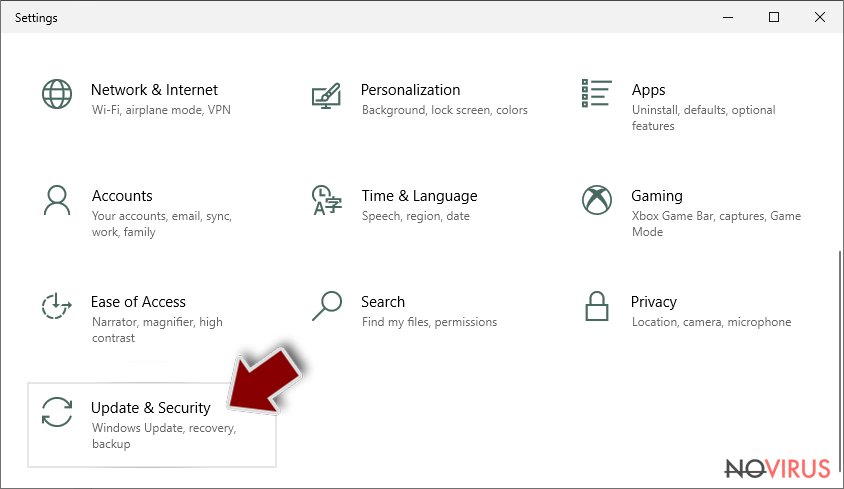
- On the left, pick Recovery.
- Scroll to find Advanced Startup section.
- Click Restart now.
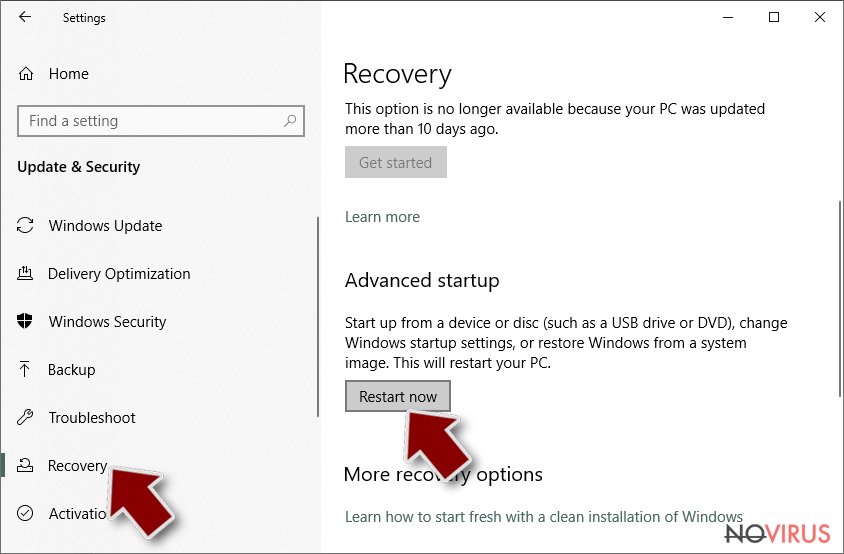
- Choose Troubleshoot.
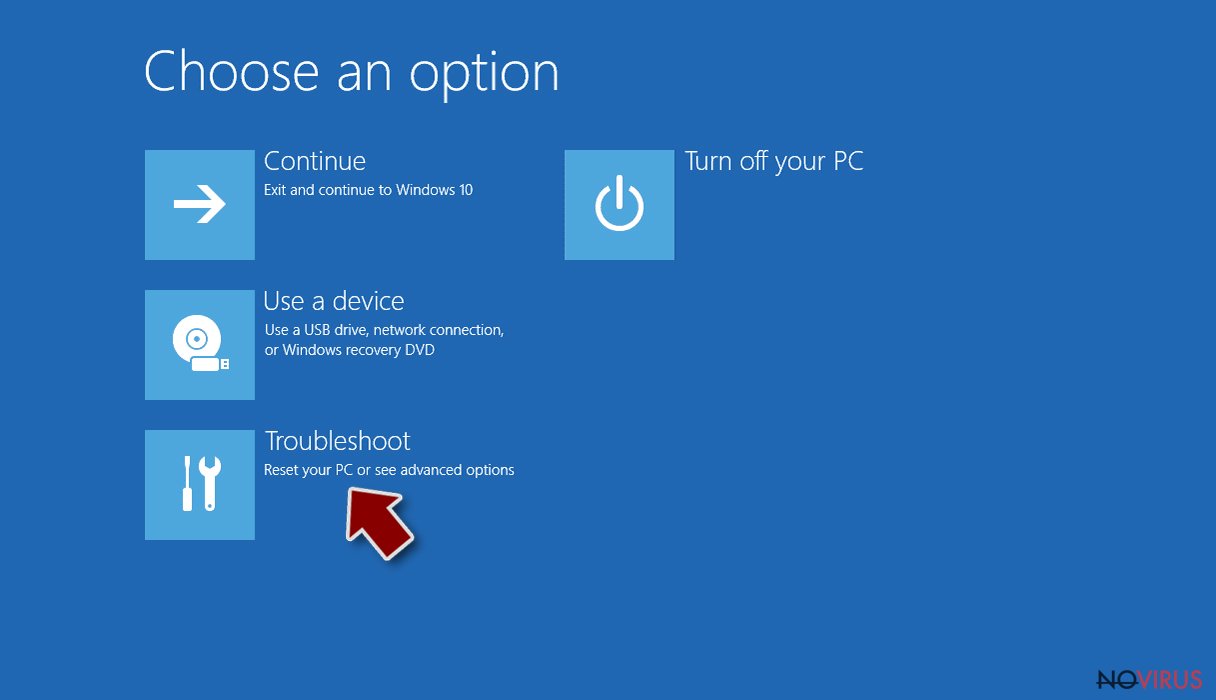
- Go to Advanced options.
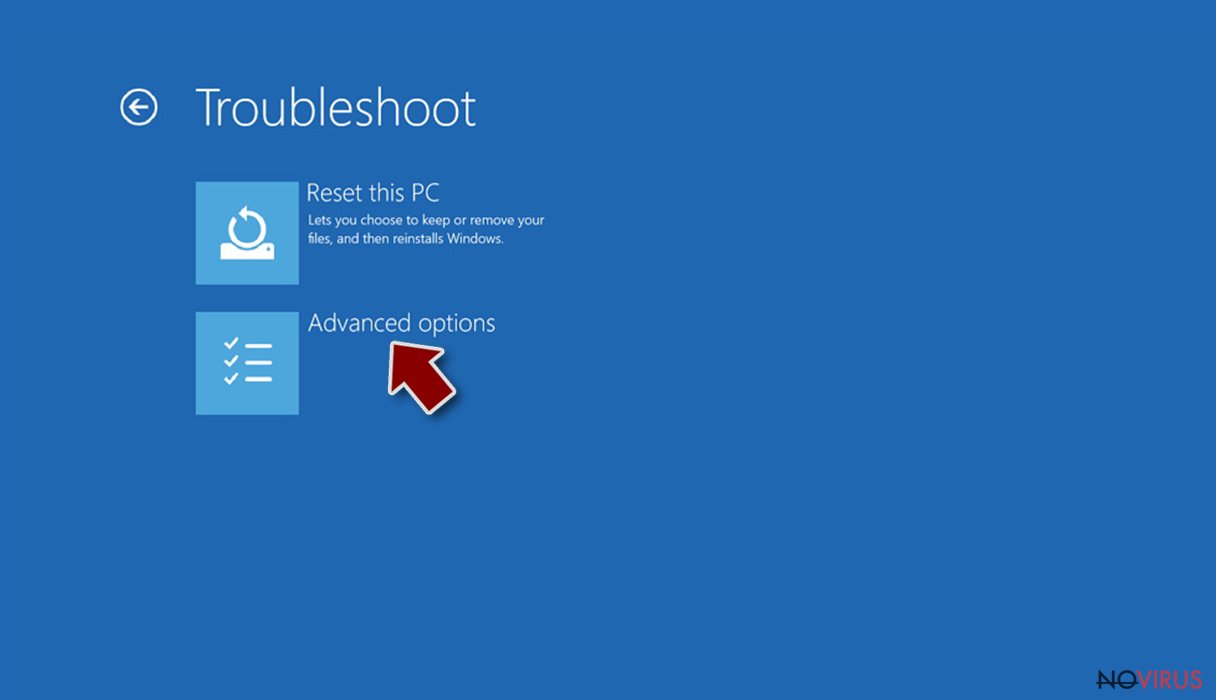
- Select Startup Settings.
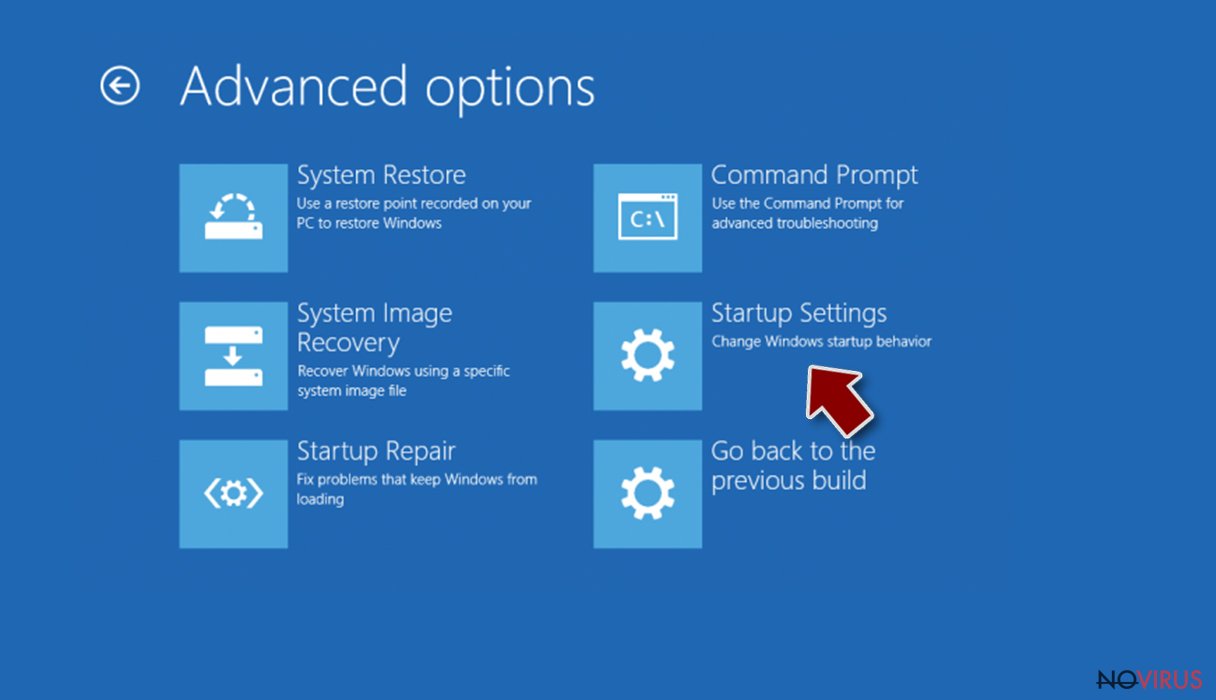
- Press Restart.
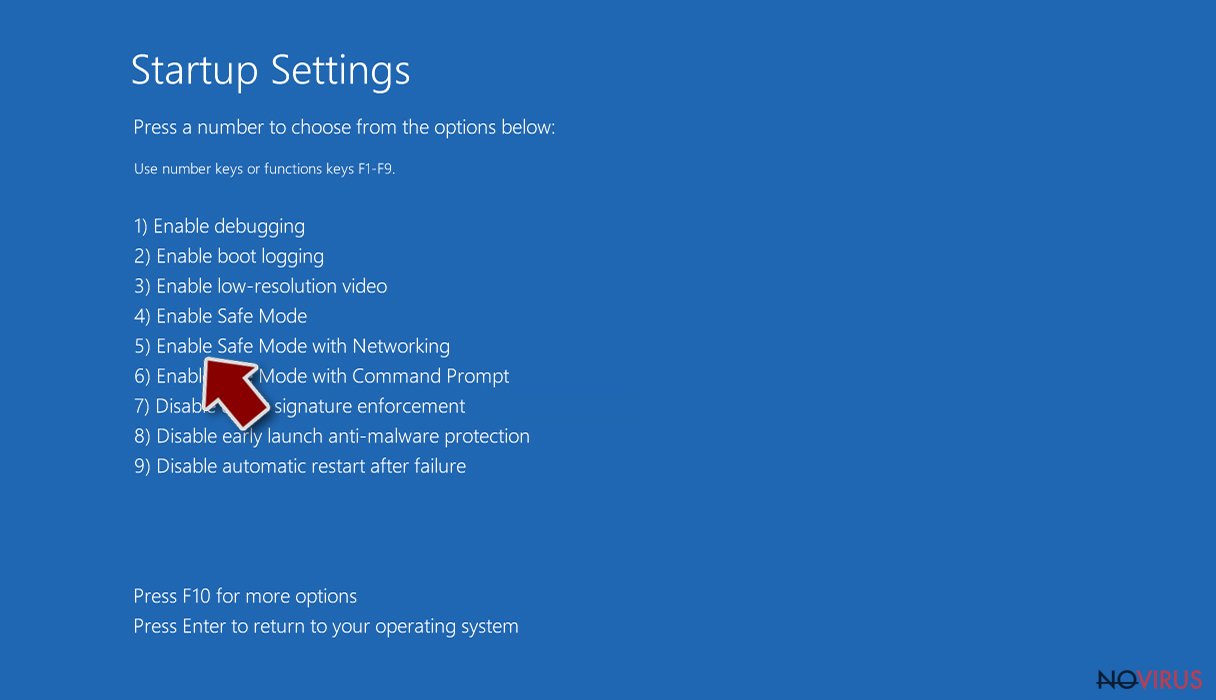
- Choose 5) Enable Safe Mode with Networking.
Step 2. End questionable processes
You can rely on Windows Task Manager that finds all the random processes in the background. When the intruder is triggering any processes, you can shut them down:
- Press Ctrl + Shift + Esc keys to open Windows Task Manager.
- Click on More details.
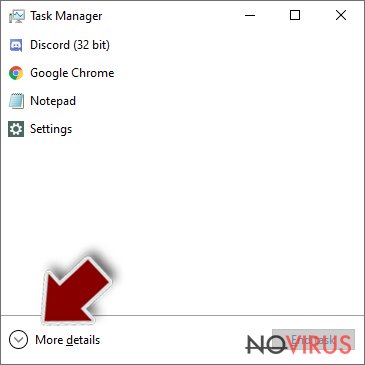
- Scroll down to Background processes.
- Look for anything suspicious.
- Right-click and select Open file location.
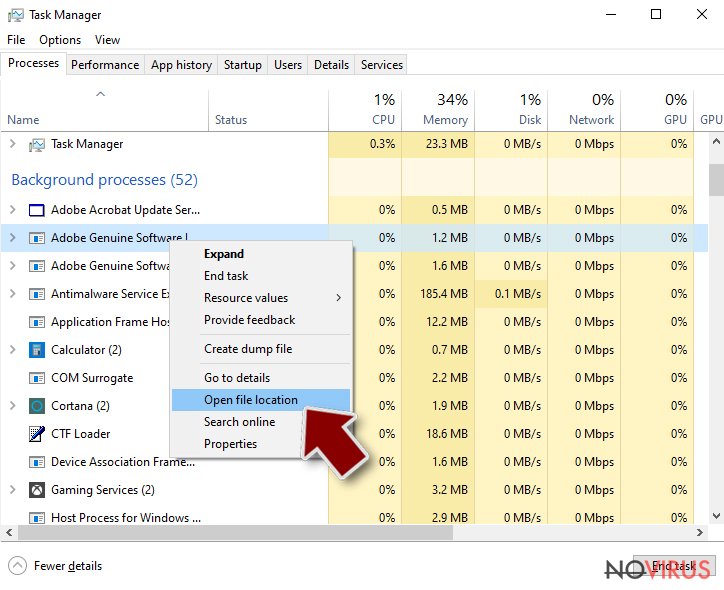
- Go back to the Process tab, right-click and pick End Task.
- Delete the contents of the malicious folder.
Step 3. Check the program in Startup
- Press Ctrl + Shift + Esc on your keyboard again.
- Go to the Startup tab.
- Right-click on the suspicious app and pick Disable.
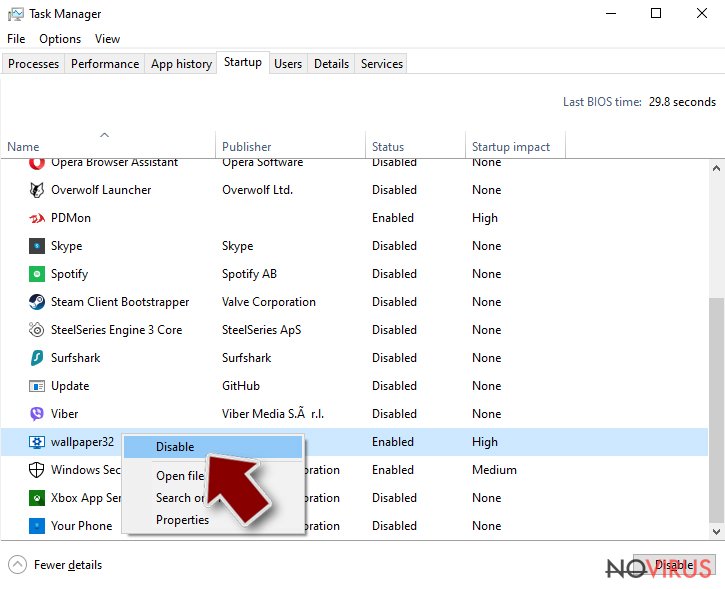
Step 4. Find and eliminate virus files
Data related to the infection can be hidden in various places. Follow the steps and you can find them:
- Type in Disk Cleanup in Windows search and press Enter.
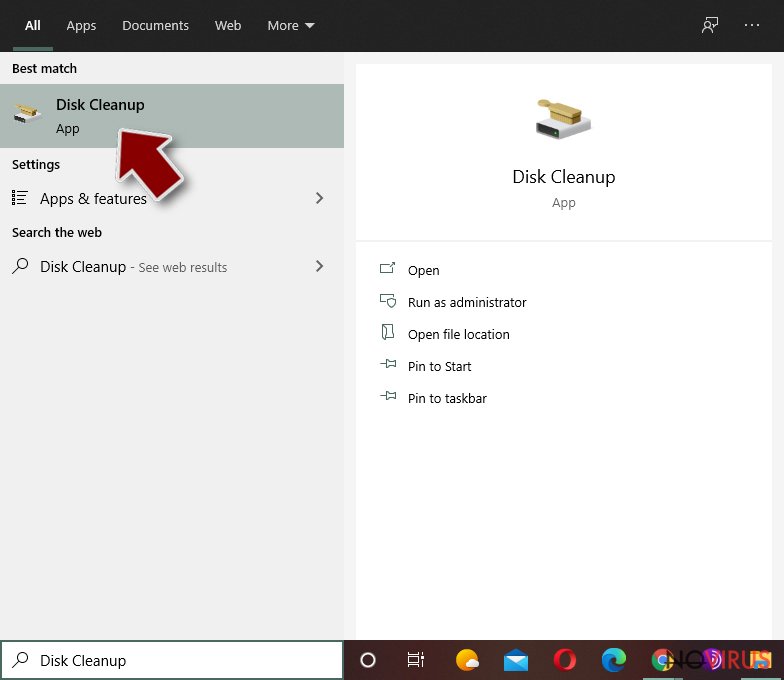
- Select the drive (C: is your main drive by default and is likely to be the one that has malicious files in) you want to clean.
- Scroll through the Files to delete and select the following:
Temporary Internet Files
Downloads
Recycle Bin
Temporary files - Pick Clean up system files.
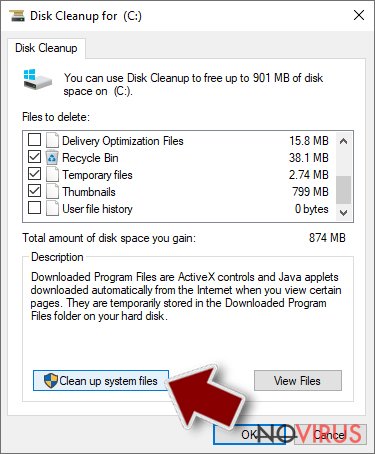
- You can also look for other malicious files hidden in the following folders (type these entries in Windows Search and press Enter):
%AppData%
%LocalAppData%
%ProgramData%
%WinDir%
After you are finished, reboot the PC in normal mode.
Eliminate WildFire Locker using System Restore
-
Step 1: Restart your computer in Safe Mode with Command Prompt
Windows 7 / Vista / XP- Go to Start → Shutdown → Restart → OK.
- As soon as your computer starts, start pressing F8 key repeatedly before the Windows logo shows up.
-
Choose Command Prompt from the list

Windows 10 / Windows 8- Click on the Power button at the Windows login screen, and then press and hold Shift key on your keyboard. Then click Restart.
- Then select Troubleshoot → Advanced options → Startup Settings and click Restart.
-
Once your computer starts, select Enable Safe Mode with Command Prompt from the list of options in Startup Settings.

-
Step 2: Perform a system restore to recover files and settings
-
When the Command Prompt window appears, type in cd restore and press Enter.

-
Then type rstrui.exe and hit Enter..

-
In a new window that shows up, click the Next button and choose a restore point that was created before the infiltration of WildFire Locker and then click on the Next button again.


-
To start system restore, click Yes.

-
When the Command Prompt window appears, type in cd restore and press Enter.
It is strongly recommended to take precautions and secure your computer from malware attacks. To protect your PC from WildFire Locker and other dangerous viruses, you should install and keep a powerful malware removal tool, for instance, FortectIntego, SpyHunter 5Combo Cleaner or Malwarebytes.
How to prevent from getting ransomware
A proper web browser and VPN tool can guarantee better safety
As online spying becomes an increasing problem, people are becoming more interested in how to protect their privacy. One way to increase your online security is to choose the most secure and private web browser. But if you want complete anonymity and security when surfing the web, you need Private Internet Access VPN service. This tool successfully reroutes traffic across different servers, so your IP address and location remain protected. It is also important that this tool is based on a strict no-log policy, so no data is collected and cannot be leaked or made available to first or third parties. If you want to feel safe on the internet, a combination of a secure web browser and a Private Internet Access VPN will help you.
Recover files damaged by a dangerous malware attack
Despite the fact that there are various circumstances that can cause data to be lost on a system, including accidental deletion, the most common reason people lose photos, documents, videos, and other important data is the infection of malware.
Some malicious programs can delete files and prevent the software from running smoothly. However, there is a greater threat from the dangerous viruses that can encrypt documents, system files, and images. Ransomware-type viruses focus on encrypting data and restricting users’ access to files, so you can permanently lose personal data when you download such a virus to your computer.
The ability to unlock encrypted files is very limited, but some programs have a data recovery feature. In some cases, the Data Recovery Pro program can help recover at least some of the data that has been locked by a virus or other cyber infection.







